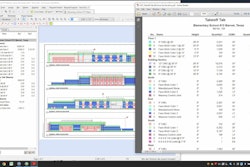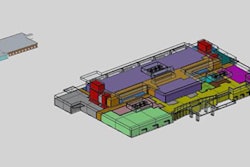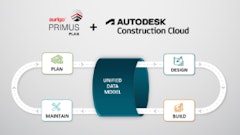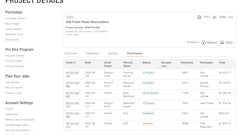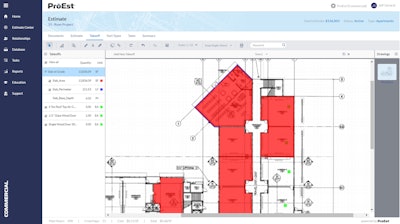
By Jonathan Barnes, Contributing Editor
Profits in construction can be lean, even with the best of technology available to help. That’s partly why project management software is increasingly popular with contractors.
It makes sense, since one wrong calculation in an estimate can doom a project before it starts—or long after. Estimating software, after all, is a sales tool that helps companies create fast, accurate estimates, and generate professional reports. More contractors are using it and more project owners are expecting that they will.
Outdated Methods
Human error in construction might never be more fatal for a company than when it involves estimates.
“We have clients who have called us after they lost $100,000 on a project because someone edited an Excel document that wasn’t authorized,” says Jeff Gerardi, president of ProEst.
Still, many contractors stick with old methods when new ways are superior. Some don’t realize how out of date they are until there’s a problem.
“One missed quantity, one miscalculated measurement, one mispriced line item… all of these can create a bid that removes the profit in a job, or even makes it a loser,” says Walter Davis, estimating market manager, Sage Construction & Real Estate Division.
Sage competitors include WinEst, ProEst, MC2, USCost, CostX, CostOS, RIB and Beck Tech.
There are dozens of construction estimating software tools, and perhaps hundreds of software types that do some estimating tasks. Microsoft Excel is king, though the popular spreadsheet has risks—anyone using it can alter any field, for example. Also, Excel is specific to the person who created the spreadsheet for the particular estimate.
For contractors unable to commit to a specialized estimating software, Excel will work for some estimating-related tasks, as will some project management software. But as it grows, a firm’s estimating system becomes crucial, because a predefined process can help drive sales.
“Estimating software is important because Determining the amounts of materials needed for a project is an important part of an estimate. But how you break down the costs can give a contractor a better sense, well before winning a bid, of how potentially lucrative the project could be.
Determining the amounts of materials needed for a project is an important part of an estimate. But how you break down the costs can give a contractor a better sense, well before winning a bid, of how potentially lucrative the project could be.
Unlike some project management tools, software that is specifically made for estimating will integrate with various construction accounting software tools. Tools that don’t integrate with the firm’s accounting software may have to be input twice.
Estimating software costs vary, from a few hundred dollars to thousands of dollars. “Ours is an annual subscription with a $5K minimum entry,” Gerardi says.
“Pricing for estimating software is all over the map, from a few hundred dollars to as much as $10,000 to $15,000 per user for desktop software. This can translate as little as $50 to $500 per user per month in a subscription environment,” Davis says.
Things a company should consider when thinking about estimating software include flexibility when adding data and reporting. When shopping for the right software, the buyer also should consider features like Takeoff, Cost Estimating, custom reporting, and integration with other accounting and project management products.
“Takeoff can take up to 80% to 90% of the time an estimator spends on a project. Today, there are excellent automation tools to reduce the time required in takeoff mode,” Davis says. “Today’s tools provide the ability for the estimator to spend less time in ‘takeoff’ mode, versus reviewing and analyzing the estimate.”
There are features a buyer should have in mind when considering estimating software, Davis notes.
“Is the software simple enough to use, but provides more than just a spreadsheet? Can you embed your logic into the estimating system, so it accommodates your unique way of looking at a project? Is the software flexible; can you make changes to both estimate and database easily and quickly? Does the software work with both 2D and 3D information?” Davis says.
Fast Results
Clear communication can bring measurable savings. It can save time and avoid unnecessary re-work or other hassles. Project management software, including specialized estimating software (some of which is tailored to specific subcontracting fields in construction), is helping contractors bring clarity to their communications. It’s helping them stay competitive.
In preconstruction, accuracy and timeliness are essential. Changes in design can be made weekly, and owners expect to see the cost impacts of those changes quickly.
“The process has moved from being ‘event’ driven to ‘process’ driven, with tens, even hundreds of estimates required to arrive at the final results. Today’s estimating tools allow an estimator to quickly modify their estimates and compare old versus new, helping owners make timely decisions throughout the process,” Davis says.
Work time also can be drastically reduced with estimating tools.
“With a couple of clicks, we can go from estimate in ProEst to job setup in Viewpoint. On a large job, it used to take at least half a day to set up a project in our accounting system. Now, it’s done in less than an hour,” says Harry Frondorf, cost engineer for HGC Construction.
Others swear by such technology. And results sell.
“We have cut the costs involved in generating a complex estimate by 50% and increased efficiency of the estimating process by 75%,” says Charlie Rowe, a Sage customer, and president of Echo Pacific Construction Inc.





